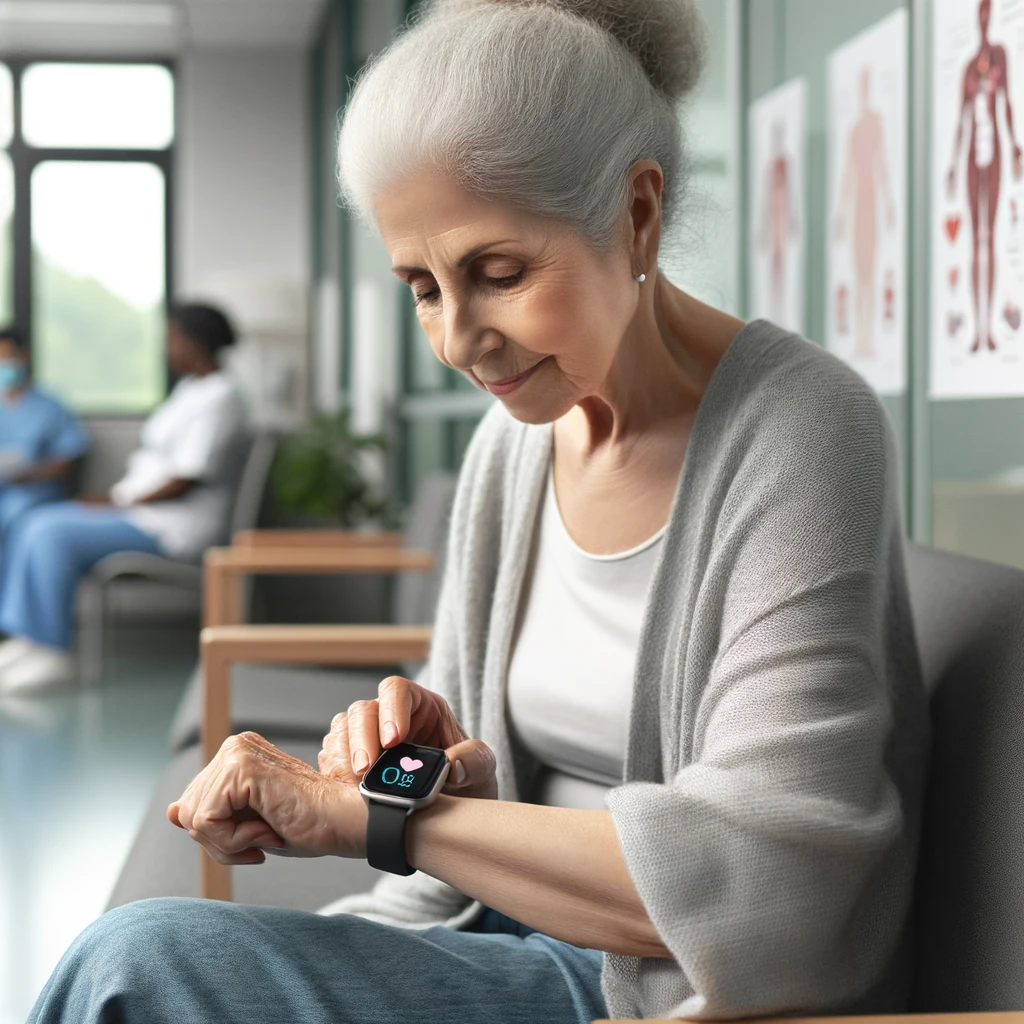Wearable Technology in Elderly Care
Wearable technology, once a novelty in fitness realms, has dramatically transformed elderly care. These smart devices, evolving from basic step counters to advanced health monitors, now play a pivotal role in enhancing seniors’ lives. The essence of this evolution lies in making elderly care proactive and tailored to individual needs. Imagine a world where a wristband can alert about potential health risks or a necklace can call for help in emergencies. This is not science fiction; it’s the reality shaped by wearable technology.
This sector’s growth is fueled by the need for continuous health monitoring and the desire for independence among the elderly. As life expectancy increases, so does the demand for solutions that ensure safety without compromising freedom. Wearables meet this demand head-on, offering real-time health insights and emergency support. The significance of these devices lies in their ability to provide peace of mind. Both seniors and their caregivers can rest easier knowing that help is just a wrist tap away. This introduction will guide readers through this fascinating journey from simple gadgets to life-saving tools, illustrating how wearables are redefining elderly care.

Types of Wearable Technologies for the Elderly
Exploring the realm of wearable technologies unveils a diverse array of devices, each meticulously designed to cater to the unique needs of the elderly. These wearables are not just gadgets; they are innovative solutions enhancing safety and health monitoring.
Smartwatches: The quintessential wearable, smartwatches, do more than display time and messages. They are equipped with sensors that track heart rate, count steps, and even measure blood oxygen levels. Some models offer electrocardiogram (ECG) functions, alerting users to heart rhythm irregularities. Their ability to synchronize with smartphones enables seniors to receive medication reminders and stay connected with family, merging health monitoring with convenience.
Wearable Fall Detection Sensors: Among the most crucial innovations are the fall detection sensors. Embedded in pendants, wristbands, or even clip-ons, these devices use accelerometers and gyroscopes to detect sudden movements typical of falls. When a fall is detected, the device automatically contacts caregivers or emergency services through connected systems. This rapid response capability is vital in preventing prolonged helplessness after a fall, a common yet hazardous occurrence among the elderly.
GPS Tracking Devices: For seniors with conditions like Alzheimer’s or dementia, GPS tracking devices are a lifeline. Discreet and easy to wear, these trackers can be embedded in shoes, belts, or even jewelry. They provide real-time location data, giving peace of mind to families and caregivers. Some devices come with geofencing features, sending alerts if the wearer wanders beyond a predefined area, ensuring prompt response in case of disorientation or wandering.
Smart Clothing: The latest addition to this technology suite is smart clothing. These garments are embedded with biometric sensors that monitor vital signs such as heart rate, breathing rate, and even sleep patterns. Some are designed with conductive fibers that provide heat therapy or muscle stimulation, offering therapeutic benefits alongside monitoring. Smart clothing stands out for its seamless integration into daily life, offering continuous health monitoring without the need for additional devices.
Specialized Wearables: Beyond these, there are specialized wearables like hearing aids that now come with smart technology, allowing users to connect directly to smartphones or televisions. Smart insoles and socks are available too, which help in monitoring foot health, crucial for diabetic seniors to prevent complications.
Health Monitoring and Emergency Response
In the realm of elderly care, wearable technology is a game-changer, especially in health monitoring and emergency response. These wearables, equipped with heart rate monitors and sleep trackers, offer continuous health surveillance. They meticulously record vital signs, ensuring any irregularities in physiological patterns don’t go unnoticed. This vigilant monitoring is crucial for early detection of potential health issues.
A standout feature in these devices is fall detection technology. It’s a lifeline for the elderly, offering immediate assistance when needed. When a fall is detected, these smart devices automatically alert caregivers or emergency services. This rapid response system minimizes the risk of severe injuries and provides a safety net, giving peace of mind to both seniors and their loved ones. The technology’s accuracy in distinguishing between actual falls and false alarms is remarkable, ensuring help is dispatched only when truly necessary.
Moreover, these wearables track sleep patterns, providing insights into the quality of rest the elderly receive. Poor sleep can be an indicator of underlying health issues. By monitoring sleep quality, caregivers can adjust care plans to promote better sleep, vital for overall health.
Wearable technology in emergency response is not just about detecting falls or monitoring heart rates; it’s about creating a safer, more responsive environment for the elderly. This technology bridges the gap between immediate medical needs and timely care, ensuring that help is just a heartbeat away.
Enhancing Independence and Quality of Life
Wearable technology is revolutionizing elderly care, transcending beyond safety to enhance independence and quality of life. These devices are equipped with features like medication reminders, fitness trackers, and social connectivity options, empowering seniors to lead more active, engaged lives.
Medication reminders are a boon, ensuring timely intake of medicines, crucial for managing various health conditions. This feature reduces the risk of missed or incorrect dosages, promoting better health management.
Fitness tracking is another key aspect. It encourages the elderly to stay active, tracking steps, and monitoring exercise routines. Regular physical activity is essential for maintaining muscle strength, flexibility, and overall well-being. These trackers motivate seniors to reach their fitness goals, contributing to their physical health.
Social connectivity is perhaps the most significant feature. These wearables often integrate with smartphones, enabling seniors to stay connected with family and friends. This connection is vital for mental health, combating feelings of isolation and loneliness prevalent among the elderly. By facilitating easy communication, wearables help seniors maintain social ties, essential for emotional well-being.
Wearable technology is not just about monitoring health; it’s about empowering the elderly to lead more fulfilling lives. It’s a tool that supports their independence, keeps them socially active, and ensures they remain a vibrant part of the community. This technology is reshaping elderly care, making it more about living life to its fullest, irrespective of age.
Challenges and Considerations in Wearable Technology for Elderly Care
Adopting wearable technology in elderly care presents unique challenges and considerations. A key aspect is ease of use. Devices must be user-friendly, with intuitive interfaces suitable for elderly users who may not be tech-savvy. Simple designs and clear instructions are essential to ensure the elderly can effectively utilize these wearables.
Privacy concerns are another significant challenge. Wearable devices collect sensitive health data, raising questions about data security and privacy. It’s crucial to ensure that this data is securely stored and handled, respecting the privacy and consent of the elderly users. Transparent policies on data usage and sharing are necessary to build trust and acceptance.
Data accuracy is a cornerstone of effective wearable technology. Inaccurate data can lead to misguided conclusions about an elderly individual’s health, potentially compromising their care. Therefore, ensuring the precision and reliability of data collected by these devices is paramount.
The need for technological literacy among the elderly and their caregivers cannot be overstressed. Providing adequate training and support is essential for them to comfortably navigate these technologies. This not only involves learning how to use the devices but also understanding the data they provide.
Cost is a significant consideration. The affordability of wearable technology can influence its accessibility among elderly populations. High costs can be a barrier, limiting access to those who could benefit most from these technologies. Efforts to make these devices more affordable are crucial in widening their reach.
The Future of Wearable Technology in Elderly Care
The future of wearable technology in elderly care is a landscape brimming with potential. Advances in technology promise to further transform how we care for the elderly. Integration with AI is a key area of development. AI-driven wearables could offer more personalized health monitoring and predictions, enhancing preventive care strategies.
Miniaturization of devices will play a pivotal role. Smaller, more comfortable wearables will likely encourage wider adoption among the elderly. This will make continuous monitoring less intrusive, integrating seamlessly into their daily lives.
The expansion of remote monitoring capabilities is another exciting prospect. Future wearables might offer more comprehensive health data, enabling healthcare providers to remotely monitor and manage a wider range of health conditions effectively.
Improved battery life and energy efficiency in wearables will enhance convenience, reducing the need for frequent charging. This is particularly important for the elderly, for whom managing device charging can be cumbersome.
The possibility of new sensors and functionalities is intriguing. Future wearables might detect a broader range of health indicators, from hydration levels to early signs of cognitive decline. This could lead to earlier interventions and more tailored care approaches.
These advancements will not only streamline elderly care but also empower the elderly to lead safer, more independent lives. As technology evolves, the potential for innovative solutions in elderly care is boundless, promising a future where wearable technology plays a pivotal role in promoting health and well-being among the elderly.

